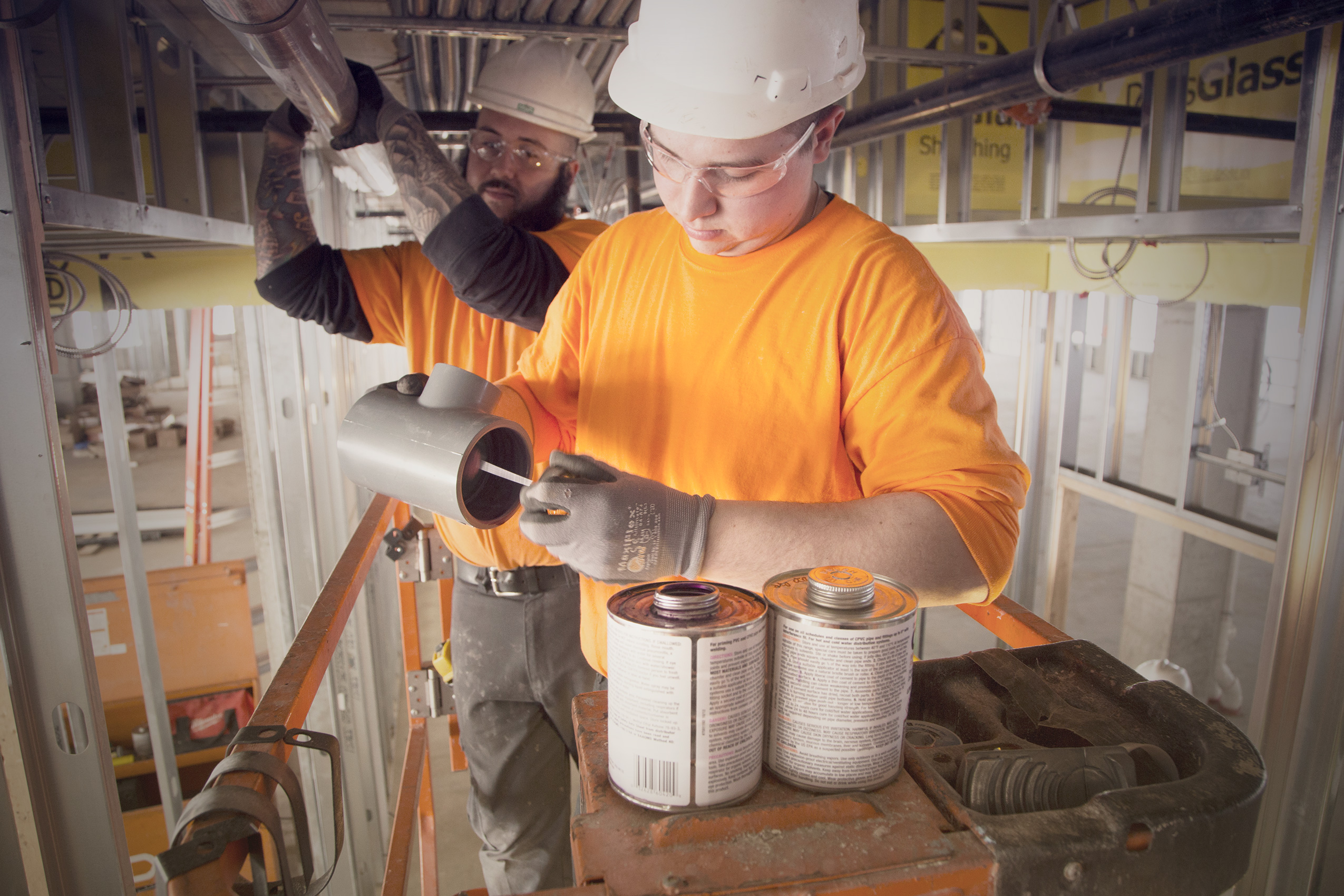Corzan CPVC: Flexibility in Joining Methods for Every Project
Long-term reliability and performance in piping systems are paramount considerations in materials selection, which is why engineers, building owners and facility managers have relied on Corzan CPVC for decades. Also in the mix are the contractors who appreciate this fact: Corzan is so versatile it can be installed using either chemical (solvent welding) or mechanical joining methods. Lubrizol engineered the CPVC compound nearly 60 years ago, and we have not stopped honing and evolving its capabilities.
The solvent welding method offers the lowest overall material cost and requires no special tools. It is a form of welding that employs chemistry and geometry instead of heat to produce a permanent molecular bond between two parts. When the right mixture of solvents and radial pressure are applied, the pipe and fitting become permanently bonded, and the joint becomes the strongest part of the system, functioning as a single component. In the two-step process, installers cut the pipe; clean the pipe and fittings; apply primer and CPVC solvent cement on the outside diameter of the pipe and inside the fitting socket; assemble the joint and verify proper installation. See a video demonstration of the CPVC solvent welding process.
The mechanical joining method consists of cutting and grooving the pipe, then connecting the pipe sections with specialty fittings. Developing mechanical grooving systems for Corzan was a years-long process to respond to customers’ requests for a portable, fast installation method that reduces system downtime without sacrificing long-term performance of the pipe and joints. Coupling manufacturers have subjected their systems to rigorous testing of numerous criteria, such as pressure and bending moment, and have found mechanical couplings to be a reliable joining method with numerous applications.
The most suitable option for your project will depend heavily on pipe size and installation considerations.
Installation Considerations
Whether CPVC is prefabricated or fabricated onsite, installers have a lot of flexibility in working with the material. Mechanical joining involves no cure times, which facilitates prefabrication. It is also ideal for alterations or repairs especially in larger facilities, as drying time is eliminated and system shutdown time is dramatically reduced.
With solvent welding, the quick two-step process and easy cutting are very compatible with an onsite fabrication. In fact, CPVC material offers installers flexibility to course-correct as necessary without expensive reconfigurations. There is no reason to be concerned that miscalculations or assembly mistakes made offsite will lead to costly fixes onsite.
Before any installation, please confirm the correct instructions from the manufacturer and any local codes.


